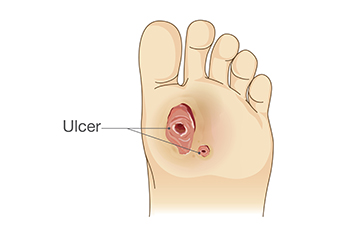Items filtered by date: June 2025
Trail Shoes Versus Running Shoes

Understanding the differences between trail and running shoes is essential for foot health and performance. Trail shoes are designed for rugged terrain. They typically feature rubber outsoles for improved traction, stiffer midsoles for added support, and durable uppers that help keep out debris while providing extra grip. In contrast, traditional running shoes are ideal for paved surfaces. They offer a lightweight design, enhanced cushioning for shock absorption, and breathable materials to keep feet cool. Each shoe type serves a specific purpose, and wearing the wrong shoe can lead to discomfort or injury. A podiatrist can evaluate your foot structure, activity level, and gait to recommend the most appropriate footwear. If you have foot or ankle pain from wearing the wrong type of shoes, it is suggested that you visit a podiatrist. This type of doctor can treat various foot conditions, while ensuring your shoes support your movement.
You should always make sure your running shoes fit properly in order to avoid injury. For more information, contact Derek Smith, DPM from Oklahoma. Our doctor can provide the care you need to keep you pain-free and on your feet.
Choosing the Right Running Shoe for Your Foot Type
Improper shoe sizing can cause a myriad of problems for your feet. Shoes that don’t fit you properly can lead to muscular imbalances in your body, which can result in foot, knee, and hip injuries.
Tips for Finding the Right Running Shoe
- Make sure you have a thumb’s width of wiggle room between the end of your longest toe and the front of the shoe.
- There should be little to no slipping at the heel
- Don’t assume your size in one shoe brand will be your size in another
- Do not lace up your shoes too tightly
- Walk around in the store with your new shoes before you buy them
If you have any questions please feel free to contact our our offices located in Ponca City, and Stillwater, OK . We offer the newest diagnostic and treatment technologies for all your foot and ankle needs.
Plantar Warts Can Be Treated!
Flat Foot Surgery May Restore Structure and Comfort

Flat foot surgery is a procedure used to correct fallen arches when conservative treatments do not provide relief. Flat feet may result from genetics, injury, or conditions such as arthritis and tendon dysfunction. The surgery typically involves repairing tendons, realigning bones, or fusing joints to restore proper foot shape and function. Recovery time varies based on the type of procedure, but often includes rest and gradual return to activity. A podiatrist can determine if surgery is necessary after a thorough evaluation and imaging studies. They also guide patients through each phase of treatment. If flat feet are affecting your mobility or causing pain, it is suggested that you speak with a podiatrist about your options for long-term relief and improved function.
Foot surgery is sometimes necessary to treat a foot ailment. To learn more, contact Derek Smith, DPM of Oklahoma. Our doctor will assist you with all of your foot and ankle needs.
When Is Surgery Necessary?
Foot and ankle surgery is generally reserved for cases in which less invasive, conservative procedures have failed to alleviate the problem. Some of the cases in which surgery may be necessary include:
- Removing foot deformities like bunions and bone spurs
- Severe arthritis that has caused bone issues
- Cosmetic reconstruction
What Types of Surgery Are There?
The type of surgery you receive will depend on the nature of the problem you have. Some of the possible surgeries include:
- Bunionectomy for painful bunions
- Surgical fusion for realignment of bones
- Neuropathy decompression surgery to treat nerve damage
Benefits of Surgery
Although surgery is usually a last resort, it can provide more complete pain relief compared to non-surgical methods and may allow you to finally resume full activity.
Surgical techniques have also become increasingly sophisticated. Techniques like endoscopic surgery allow for smaller incisions and faster recovery times.
If you have any questions please feel free to contact our offices located in Ponca City, and Stillwater, OK . We offer the newest diagnostic and treatment technologies for all your foot and ankle needs.
Why Diabetic Foot Ulcers Happen and Who They Affect

Diabetic foot ulcers are open sores or wounds that can appear on the feet of people with diabetes. They are usually caused by a mix of poor circulation and nerve damage, which can make it hard to feel pain or notice injuries. Over time, even a small cut or pressure point can turn into a serious wound. These ulcers are more common in people who have had diabetes for many years, especially if their blood sugar is not well controlled. If not treated early, foot ulcers can lead to infections or more serious complications, making regular foot care essential. If a diabetic foot ulcer is suspected or is not healing properly, it is suggested that you see a podiatrist for proper evaluation and care.
Diabetic foot care is important in preventing foot ailments such as ulcers. If you are suffering from diabetes or have any other concerns about your feet, contact Derek Smith, DPM from Oklahoma. Our doctor can provide the care you need to keep you pain-free and on your feet.
Diabetic Foot Care
Diabetes affects millions of people every year. The condition can damage blood vessels in many parts of the body, especially the feet. Because of this, taking care of your feet is essential if you have diabetes, and having a podiatrist help monitor your foot health is highly recommended.
The Importance of Caring for Your Feet
- Routinely inspect your feet for bruises or sores.
- Wear socks that fit your feet comfortably.
- Wear comfortable shoes that provide adequate support.
Patients with diabetes should have their doctor monitor their blood levels, as blood sugar levels play such a huge role in diabetic care. Monitoring these levels on a regular basis is highly advised.
It is always best to inform your healthcare professional of any concerns you may have regarding your feet, especially for diabetic patients. Early treatment and routine foot examinations are keys to maintaining proper health, especially because severe complications can arise if proper treatment is not applied.
If you have any questions please feel free to contact our offices located in Ponca City, and Stillwater, OK . We offer the newest diagnostic and treatment technologies for all your foot and ankle needs.
Identifying Underlying Causes of Limping

Limping due to foot or ankle pain is often caused by an antalgic gait, which is the body’s response to discomfort in the lower limbs. This type of limp, termed antalgic gait, is usually a sign that a person is shifting weight away from a painful area, resulting in uneven walking patterns. Common causes of limping include fractures, arthritis, inflammation, or infection in the bones or joints of the feet. Rheumatoid arthritis can damage joints in the toes and ankles, while osteoarthritis may lead to pain from worn cartilage. In some cases, tumors or infections in the bones of the foot can lead to persistent limping. Sciatica and spine conditions may also trigger foot pain that affects walking. Diagnosis typically involves imaging tests to locate inflammation, fractures, or bone damage. A podiatrist may recommend supportive footwear, custom orthotics, medication, or surgery, depending on the severity of the condition. If you are limping, it is suggested that you schedule an appointment with a podiatrist for a diagnosis and appropriate treatment.
If you have any concerns about your feet, contact Derek Smith, DPM from Oklahoma. Our doctor can provide the care you need to keep you pain-free and on your feet.
Biomechanics in Podiatry
Podiatric biomechanics is a particular sector of specialty podiatry with licensed practitioners who are trained to diagnose and treat conditions affecting the foot, ankle and lower leg. Biomechanics deals with the forces that act against the body, causing an interference with the biological structures. It focuses on the movement of the ankle, the foot and the forces that interact with them.
A History of Biomechanics
- Biomechanics dates back to the BC era in Egypt where evidence of professional foot care has been recorded.
- In 1974, biomechanics gained a higher profile from the studies of Merton Root, who claimed that by changing or controlling the forces between the ankle and the foot, corrections or conditions could be implemented to gain strength and coordination in the area.
Modern technological improvements are based on past theories and therapeutic processes that provide a better understanding of podiatric concepts for biomechanics. Computers can provide accurate information about the forces and patterns of the feet and lower legs.
Understanding biomechanics of the feet can help improve and eliminate pain, stopping further stress to the foot.
If you have any questions please feel free to contact our offices located in Ponca City, and Stillwater, OK . We offer the newest diagnostic and treatment technologies for all your foot and ankle needs.

